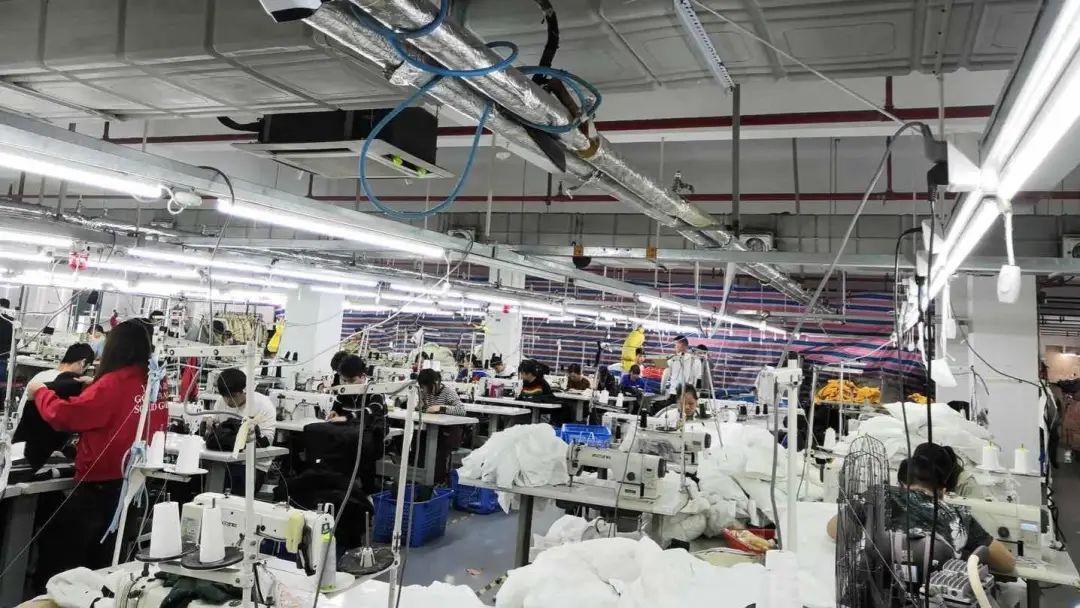

Rhino Smart Manufacturing, isn’t this what Ali boasted about two years ago?
Author:Qin Guan Time:2020/09/25 阅读:6018
If you want to understand something in the Internet industry, it is said that you only need to stay in the media long enough.
After the new intelligent manufacturing concept of Rhino Factory has continued to ferment in the past few days, we have always felt that the logic of this business seems familiar, but we have fallen into self-doubt, thinking that maybe this "empowerment" for small and medium garment factories and Taobao clothing merchants, It will indeed be different because of the rapid iteration of technology.
However, in the face of all kinds of real production lines, we began to "cheer for the people", and even promoted the development of the entire country's clothing industry. We found a way to get out of "confusion"—— Show you some things I did two years ago, and discuss with readers what the difference is between the two.
Don’t flatter, don’t belittle, let’s see if this Ali’s newly-made carnival can bring earth-shaking changes to the clothing industry as many people predicted.

Picture from Tiger Sniff Pro: Rhino Model Factory
In an exclusive interview with 36 Krypton, Ali Rhino CEO Wu Xuegang clearly pointed out that Rhino’s new manufacturing needs to do two things:
On the one hand, it is oriented to Taobao merchants, and production is determined by sales, so as to achieve quick response to small orders and solve service and cost problems;
The other side is to empower garment factories to achieve "reasonable arrangement of production capacity". Through the model room of the rhino factory, the digital production model will be "transplanted" to hundreds of factories in the future, so that the production process of the factory will be digitized and transparent.
Obviously, this essentially solves the problem of information asymmetry on both sides of supply and demand, making information flow more efficient.
And this is exactly what the “Amoy Factory New Manufacturing Project” led by Ali 1688 (B2B business platform) did two years ago.
In an interview with us in 2018, the person in charge of the Taofactory project said that "it has helped more than 30,000 factories to achieve accurate matching based on massive big data, so that high-quality factories can obtain accurate customer resources, and reduce the time and resources caused by the mismatch between supply and demand. waste".
And the way of matching is to match withAlibaba Cloud IOT Teamcooperate:
First, the Alibaba Cloud technical team will help the factory production line to deploy IOT devices to fully digitize the situation of each production line in the garment factory.
Second, complete the digitalization of the production process through the visual recognition and analysis of the garment production line.
Third, open up the entire online supply chain data.
Obviously, what they want to solve is alsoMismatch between supply and demand, the method is a bit like "factory digital transformation".
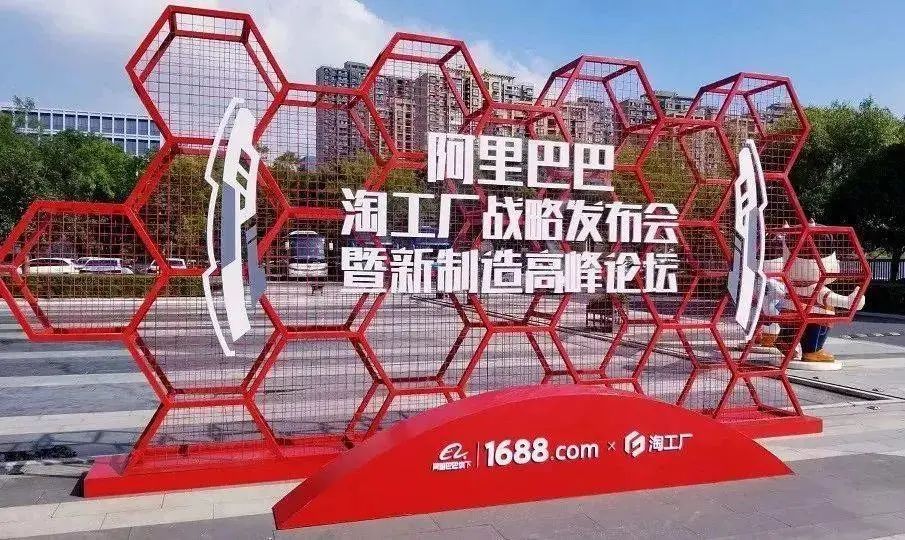
Fortunately, we accepted the invitation of Ali 1688 in 2018 and visited a small town called Qiaosi in Hangzhou, where hundreds of small and medium-sized garment factories gathered. Some can’t even be called factories, many of them are hidden in residential buildings, and should be called “clothing workshops”——
There is no advanced production line, but a production team of less than 50 people can produce hundreds of clothes every day.
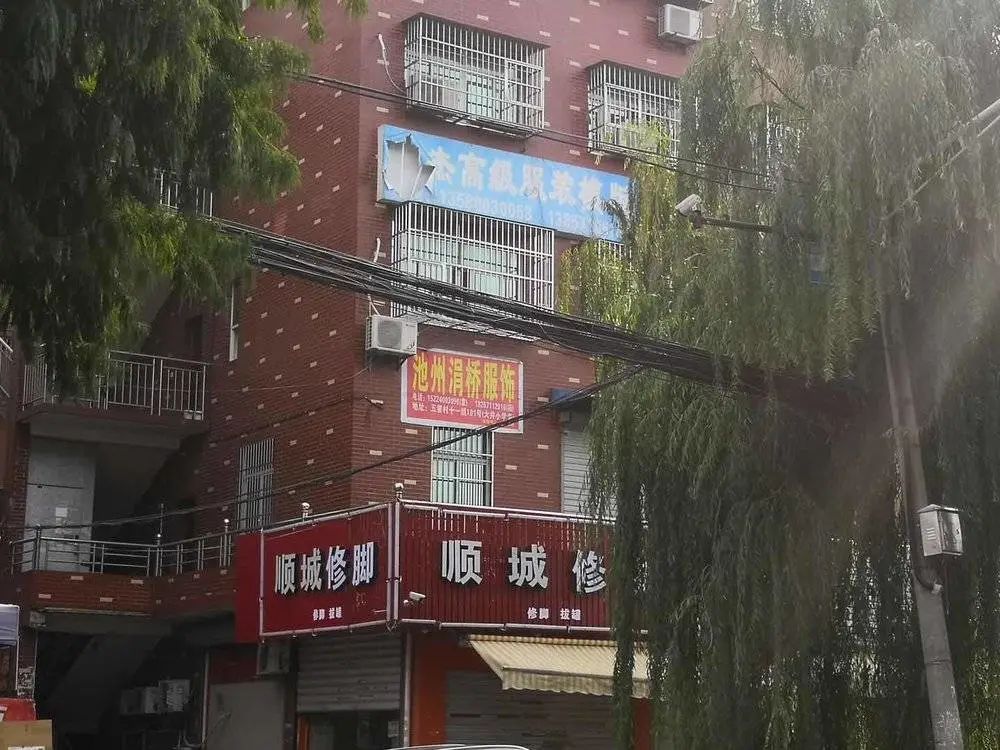
In the small town of Qiaosi, Hangzhou, there are many family-style production workshops.
At that time, Dianshi Factory, a benchmark project of Amoy Factory, was the destination of my trip. But unfortunately, the scene I saw at that time was very different from the "automated model room" that I saw now. However, this is the general appearance of tens of thousands of small and medium-sized garment processing factories in the Yangtze River Delta and Pearl River Delta.
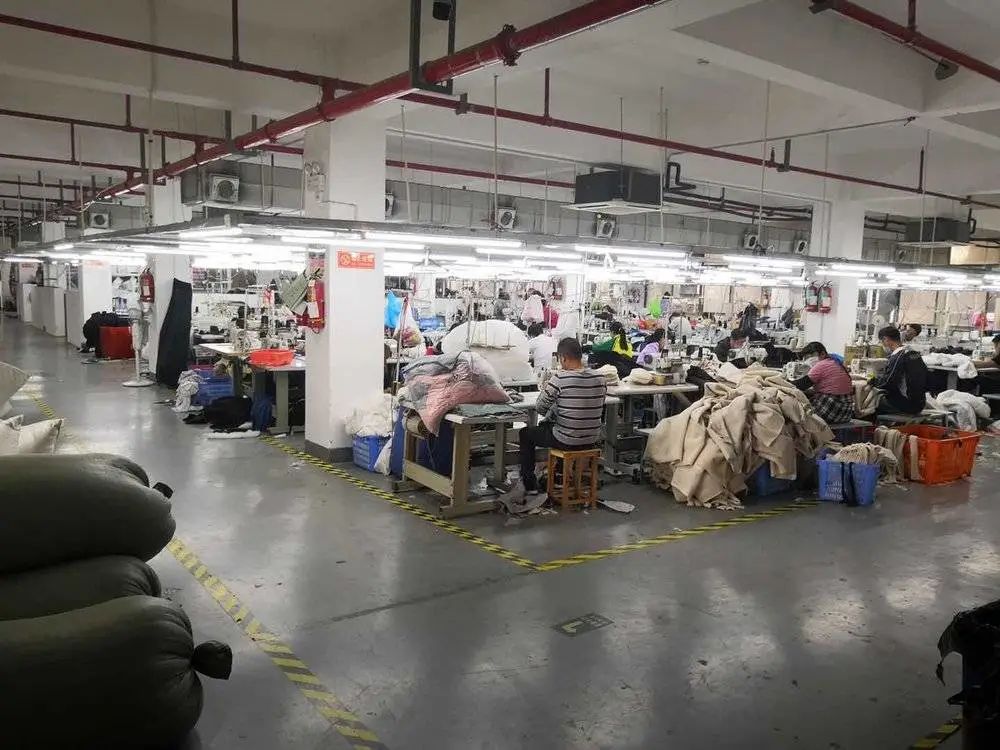
Fabric, cutting and sewing are all in one space.
Its "inside" is not tall at all, and clothes materials are piled up everywhere in the corners. The so-called production line is actually a number of tailors who "flip their fingers" out of the prototypes of jeans or hoodies, and then send them to the The sewing table on the other side.
The whole scene is hectic and has no sense of rhythm, only the humming noise of the machine and the cotton wool flying all over the sky fill a space of hundreds of square meters.
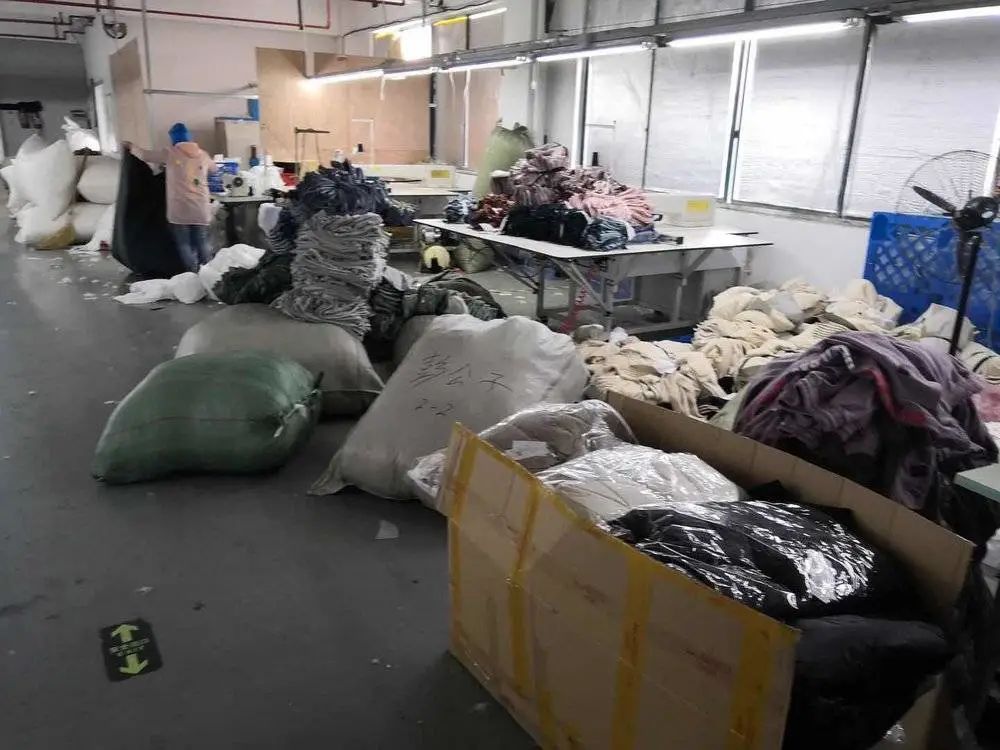
Incoming materials are piled aside.
At that time, the slogan of Taofactory was "use low-cost digital software and hardware to help factories realize the process of production data". And Wang Cunshi, the owner of Dianshi, is said to have spent 50,000 yuan to purchase this set of software and hardware equipment that combines artificial intelligence and IOT technology.
Therefore, we see that the camera-like hardware is installed on the front and back of the relatively simple workbench. According to the boss of Dianshi, in this small space, about 20 cameras and edge servers that can meet real-time monitoring are installed in all production links including cutting bed and sewing.
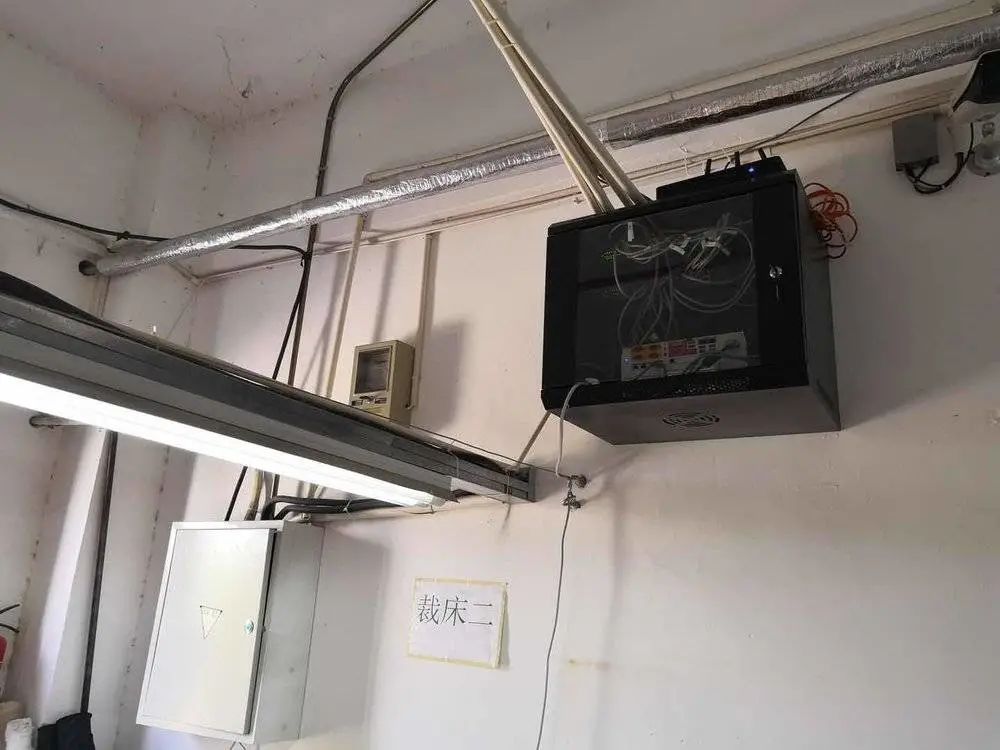
edge server
Ali told us at the time,The role of these IOT hardware is mainly through computer vision analysis, which can do data processing for each production process.
In this way, if the factory receives 10 orders, each order can be automatically matched with the factory and the buyer by the online system, and the online virtual robot will manage the production plan and automatically track the production plan.
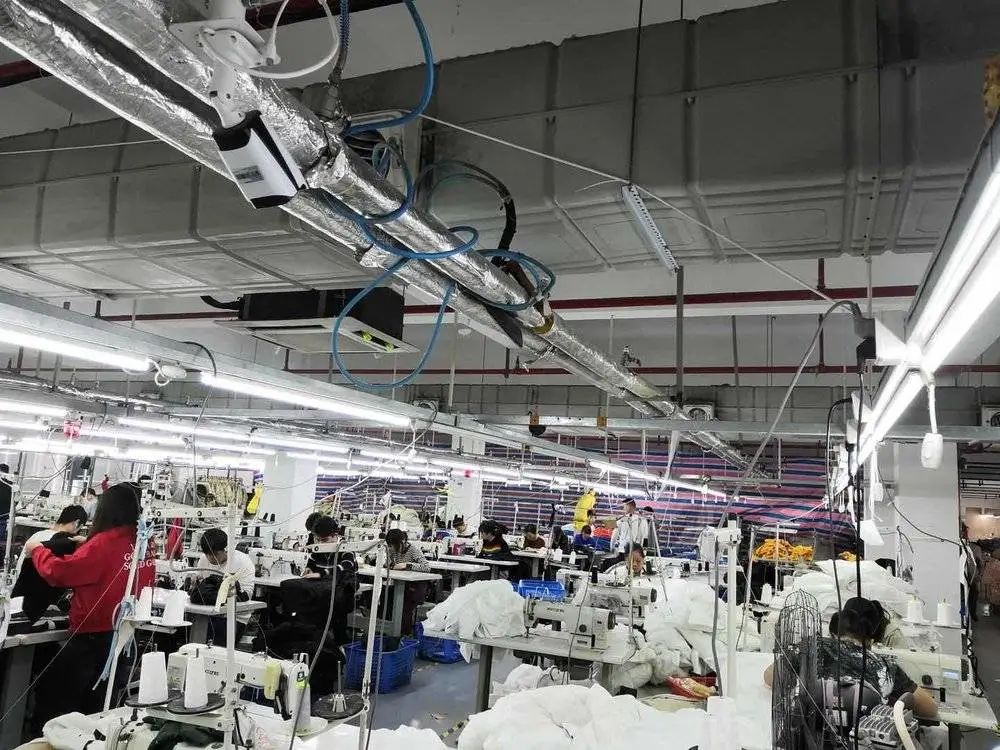
"One link and one link can save time on both sides." At that time, Wang Cunshi, the owner of Dianshi, told us that he used to often accept large orders of more than 5,000 pieces, because he had no time to accept small orders, which was a "waste" of manpower and time. , and not too profitable.
However, it is true that business is getting more and more difficult year by year, and orders can only be obtained by robbing, and small factories themselves cannot understand the market situation.
He quietly told us that every year, many factories will have a backlog of product inventory due to mistakes in betting on Double Eleven, and owe a lot of money. "The owner of a factory next to him jumped off the building a few years ago because the factory had a backlog of down jackets that could not be sold and closed down." He admitted that small and medium-sized factories do not have the ability to predict the market and clear inventory.
At the same time, more and more stores on Taobao, especially many so-called "designer brands", are more inclined to "determine the production quantity based on sales volume", so they have been looking for ways to optimize the production process and shorten the production process as much as possible. delivery cycle.
"Many times our conflict with customers is that they feel that we are not producing for them, so we put them behind and deliberately delay; but in fact, we have a fixed schedule for each order, and it is always unclear to explain to them .”
Therefore, all transactions and production steps such as "fabric to warehouse", "feeding and cutting", "production sewing", "offline withdrawal" and other transactions and production steps are open and transparent online - upload pictures or videos from the factory side) , so that the client can see the progress update of their products online, which indeed solves a problem.
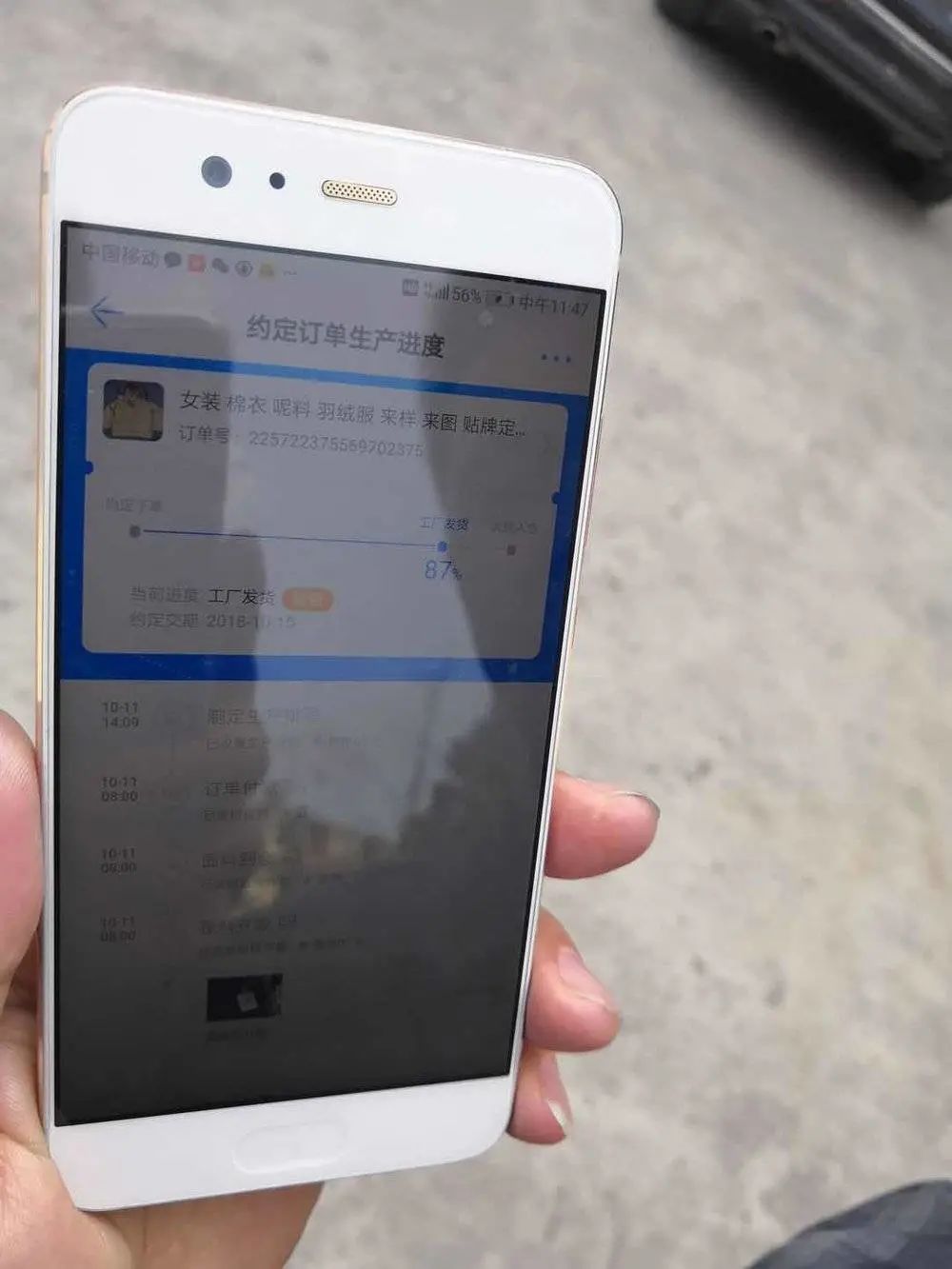
Obviously, there is a video uploaded in the column of "Feeding and Cutting" as proof
On the other hand, as a factory owner, in order to be able to take more small orders, Wang Cunshi split the production team of dozens of people into many different combination models, which is very different from the assembly line of traditional large factories.
"The standard assembly line with more than 20 people is used for large orders, and groups of 2, 4 and 6 people are set up for small orders. It is equivalent to flexibly arranging each order to production teams of different sizes according to the scale. .”
Interestingly, the project also mentioned the need to learn and surpass Zara's "quick reverse" mode.
The concept of rapid response in the clothing supply chain was first proposed by Zara, a world-renowned fast fashion brand. And a technology called "radio frequency identification" (RFID) is fully applied in the entire supply chain - through the "identification code" on the product and the production process, the whole process of product tracking from the factory to the store is realized. And real-time monitoring of inventory.
In the Amoy factory project,"Computer vision" and "online big data analysis" have become the key technologies for garment processing factories in the propaganda to realize small order quick response and production according to sales.According to the official data provided at the time, through computer vision algorithms, the Danshi factory optimized the production process, increased production scheduling by 6%, and shortened the delivery cycle by 10%; while Taobao Tmall data can help the factory make market judgments.
In addition, on the 1688 platform, Amoy Factory refers to ZARA's supplier rating model and classifies factories into grades. The higher the level of the factory, the more likely it is to receive orders from high-quality customers.
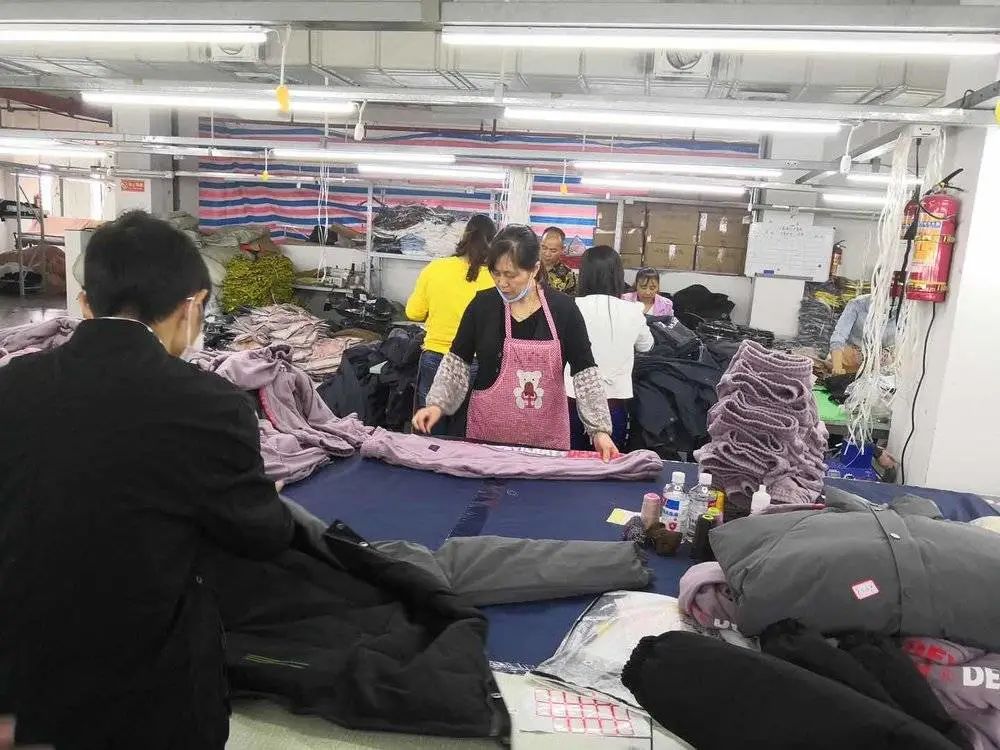
That's right, the transparency of delivery and data sharing in each link can make multiple orders more orderly when operating in parallel, and also "standardize" the delivery process to a certain extent, so that each process can be linked together. It can indeed save time by doing it around the ground;
The integration of online market and sales big data analysis and offline production and manufacturing data can allow factories to arrange different optimal combinations of "large, medium and small orders" in off-season and peak season, without production gaps, so that the off-season is not short ; and Taobao merchants can also be matched to factories with suitable production capacity and technology.
Everything looks flawless in theory.
But if you think about it carefully, there are actually some loopholes and confusing conclusions that are visible to the naked eye.
First of all, does the transparent production process require computer vision? Besides image data, what other data?
According to people in the industrial Internet industry who have done similar projects, many clothes are stacked together, and image recognition hardly works——Whether it is to confirm the quantity or confirm the quality, it is not very useful.
"In this environment, it is very difficult. Even if the process is completed, the worker can directly press the button, and there is no need for a machine to confirm.
And the completion confirmation is not to confirm the appearance of a certain piece of clothing, but to confirm it through some execution actions or quantity. In general, image recognition is useless in such a complicated environment, but cameras can do real-time monitoring and on-site working condition confirmation, such as confirming the processing status of workers, which is necessary. "
So the question is, besides the image data, what other available data is collected on site to deploy manpower and adjust inventory? After walking around the workshop, I found nothing else.
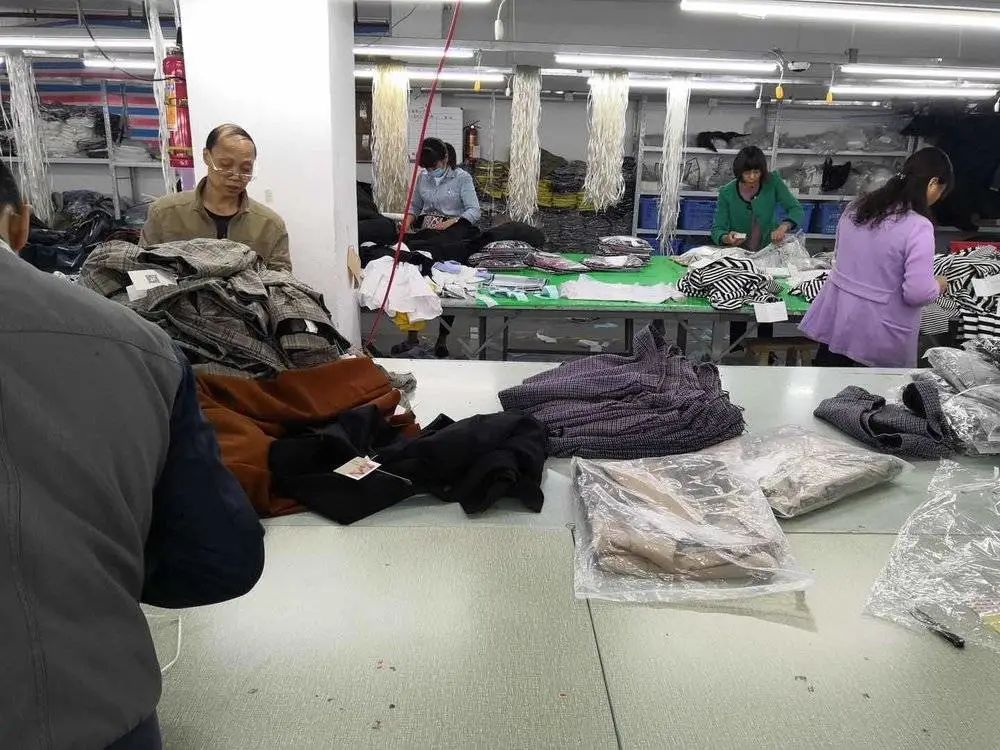
Secondly, although clothes can be "standard products", in this small garment processing factory with less than 100 employees, the process is not standard at all.
During the visit, the board-making team worked in a closed small room, where no equipment was installed; and there was no trace of digitization in the corner where the cloth was stored. As for the masters who make small orders manually in groups of two or four, it is even more difficult to quantify their work with cameras or other sensors.
Originally, the intelligent transformation of industry was based on automation. Without equipment automation, how can we talk about intelligence? This transformation is more like a "trading to the cloud" rather than an intelligent transformation.
When he asked the boss this question, he also admitted that some links "really need to be manually clicked to complete", and the significance of online ordering is to "avoid bickering and check the parallel progress of orders at any time."
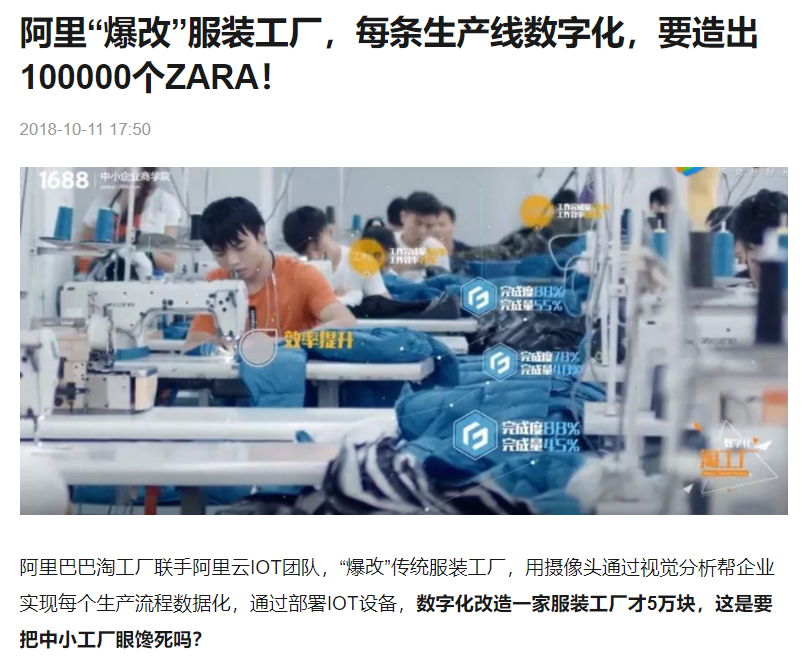
Third, the so-called less than 50,000 can use standard software and hardware equipment to help small and medium-sized garment factories complete intelligent transformation, which sounds a bit like hooliganism.
Even though the garment factory process is relatively simple as many people say, the size of the production workshop of each garment factory is different, the number of employees is also different, the functions and oldness of the equipment are different, the scale of each production link is different, and the processing technology is different. It's not the same, and the flow of people is also different... I don't know how to generalize it with the same price and the same amount of hardware.
In addition, the labor costs of engineers, real-time system updates and follow-up services are also very expensive costs.
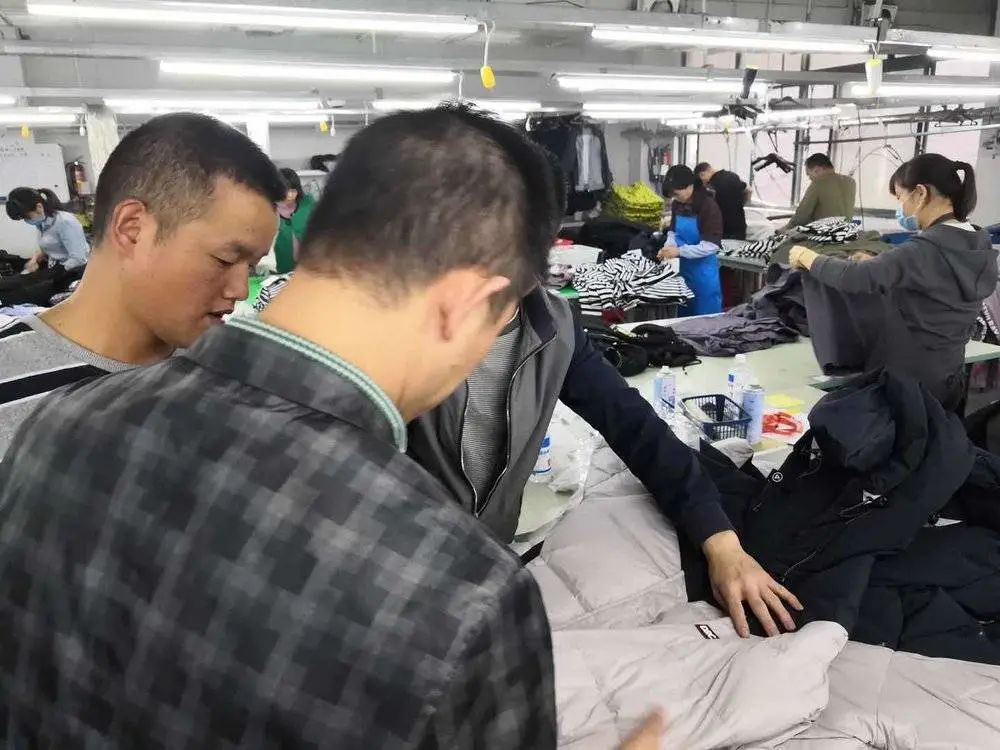
Fourth, production is determined by sales, and Ali can indeed help factories realize it. For example, what is popular in the current season, using artificial intelligence to predict user preferences is indeed more effective than factory bosses.However, technology can only do a good job of the single-dimensional part of the online work at present, and the offline production workshop is a complex polyhedron. The essential question of survival.
Technology and R&D personnel also need to have a high insight into the production process of the garment industry, the proficiency of master craftsmen, the flow of factory personnel (workers leave and stay is very unstable), the market changes of foreign trade to domestic sales, and the fierce competition environment power and comprehension.
In addition, everyone may have overlooked a detail of the benchmark project "Dianshi", that is, all the groups are arranged by the boss-the ratio of personnel between large groups and small groups, how to group to maximize production efficiency and achieve enough flexibility? According to our on-site observation, there is no trace of systematic decision-making on site."People" still play a decisive role in small and medium-sized factories.
In short, don't try to use words such as "technology" and "transformation" to completely solve the long-standing pain points of garment processing factories and even an industry.

Some people say that Ali wants to use the model room to sell digital solutions to domestic factories. I want to ask how many factories can buy this robotic arm, and it needs to be accompanied by a "recovery strategy", but Rhino Intelligent Manufacturing has always answered vaguely about the business model and income issues. Picture from Tiger Sniff Pro
Two years later, when we saw that Ali built the "model room" of the rhino factory, on the one hand, we wondered whether Ali felt that he could not break through the cost and manpower bottlenecks existing in small and medium-sized factories in China, so he simply built a demonstration first and deployed it. On the other hand, we are also wondering if there are some unknown changes in this project two years ago.
Therefore, I contacted Ali 1688 again, and the other party has already indicated that this project is no longer done, and "upgraded" to a C2M business, connecting the domestic trade wholesale platform 1688 with the Taobao special edition. in other words,It is to help factories do a good job of "docking" and "matching" with consumers, focusing on "factory direct sales", and not mentioning the issue of participating in factory transformation.
In addition, when I contacted Dianshi Factory again, there was no reply from the other party.
Today, instead of the Alibaba Cloud IOT team, Rhino Zhizao, bred by Taobao, has built a benchmark "model room" by itself, and once again mentioned the application of artificial intelligence, IOT and other technologies The data and production line data are all connected, and the generated data is used to determine the scheduling of workers; and the use of Taobao's massive data is mentioned again to help clothing brands make market forecasts...
It sounds like it was the same as two years ago, but it seems to be different.
But at least we know that if the simple equipment and workshop layout in the small and medium-sized factories with meager profits and fierce competition along the coast, if you just set up a camera and don't transform it from the bottom, you won't get enough effective data.
But then again, it doesn't seem to make much sense for Ali to build a model factory with a robotic arm and a spider-web hanging system, whether it can give some reference to small and medium-sized factories that are always on the verge of bankruptcy.
So back to Ali himself, is the income brought by this model room enough to support them to build a second and third factory?
Perhaps Ali calculates the return on investment ratio by himself, and after the profit and loss balance is achieved in the future, those who intend to join may promote this model, and then we will record the effect in words again.
Produced | Tiger Sniff Technology Group
Author | Utada
The head picture shows the garment processing factory in Qiaosi Town, Hangzhou
